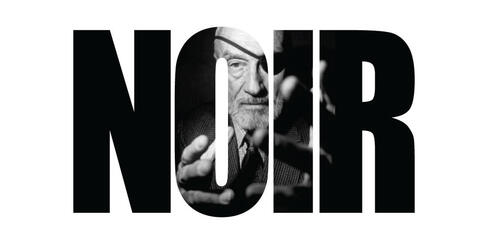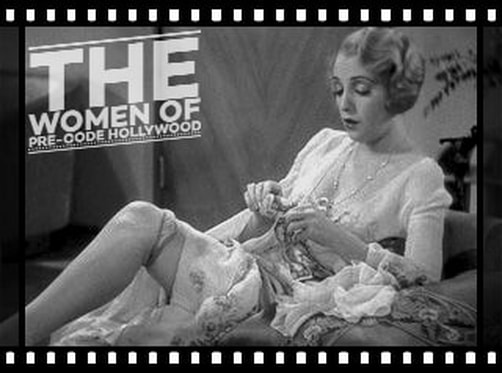AUDREY TOTTER
AND FILM NOIR
Audrey Totter made significant contributions to the film noir genre during her career. She became known for her portrayal of strong, complex, and often manipulative women, which fit perfectly within the dark and atmospheric world of film noir. Her performances showcased her versatility as an actress and her ability to convey a sense of mystery and danger.
One of Totter's most memorable roles in film noir was in the 1947 film "Lady in the Lake," directed by Robert Montgomery. She played Adrienne Fromsett, a seductive and manipulative nightclub singer who becomes entangled in a murder investigation. Totter's portrayal of Fromsett captured the essence of a classic femme fatale, using her husky voice and alluring presence to captivate audiences.
In addition to "Lady in the Lake," Totter appeared in several other notable film noir productions. In "The Unsuspected" (1947), she portrayed the mysterious and enigmatic Althea Keane, while in "High Wall" (1947), she played the supportive and devoted wife to a war veteran suffering from amnesia. In "Tension" (1949), she portrayed a woman caught in a love triangle that leads to deceit and murder.
Totter's performances in film noir were characterized by her ability to convey a sense of ambiguity and moral complexity. Her characters often straddled the line between good and evil, exhibiting a mix of vulnerability and ruthlessness. Her husky voice, sharp features, and sultry demeanor added an extra layer of intrigue to her performances, making her a standout presence in the genre.
While Totter's film career declined in the late 1950s, her contributions to film noir remain highly regarded. Her performances helped define the femme fatale archetype and contributed to the overall atmosphere of suspense, cynicism, and fatalism that characterizes the film noir genre. Today, she is remembered as one of the notable actresses of the era and a significant figure in the history of film noir.
One of Totter's most memorable roles in film noir was in the 1947 film "Lady in the Lake," directed by Robert Montgomery. She played Adrienne Fromsett, a seductive and manipulative nightclub singer who becomes entangled in a murder investigation. Totter's portrayal of Fromsett captured the essence of a classic femme fatale, using her husky voice and alluring presence to captivate audiences.
In addition to "Lady in the Lake," Totter appeared in several other notable film noir productions. In "The Unsuspected" (1947), she portrayed the mysterious and enigmatic Althea Keane, while in "High Wall" (1947), she played the supportive and devoted wife to a war veteran suffering from amnesia. In "Tension" (1949), she portrayed a woman caught in a love triangle that leads to deceit and murder.
Totter's performances in film noir were characterized by her ability to convey a sense of ambiguity and moral complexity. Her characters often straddled the line between good and evil, exhibiting a mix of vulnerability and ruthlessness. Her husky voice, sharp features, and sultry demeanor added an extra layer of intrigue to her performances, making her a standout presence in the genre.
While Totter's film career declined in the late 1950s, her contributions to film noir remain highly regarded. Her performances helped define the femme fatale archetype and contributed to the overall atmosphere of suspense, cynicism, and fatalism that characterizes the film noir genre. Today, she is remembered as one of the notable actresses of the era and a significant figure in the history of film noir.
AVAILABLE FILMS:
ADVENTURE (1945)
ALIAS NICK BEAL (1949)
BEGINNING OR THE END, THE (1947)
BEWITCHED (1945)
BLUE VEIL, THE (1951)
DANGEROUS PARTNERS (1945)
FBI GIRL (1951)
HIGH WALL, THE (1947)
JET ATTACK (1958)
LADY IN THE LAKE (1946)
MAIN STREET AFTER DARK (1944)
MAN OR GUN (1958)
POSTMAN ALWAYS RINGS TWICE, THE (1946)
SELLOUT, THE (1951)
SET-UP, THE (1949)
TENSION (1949)
UNDER THE GUN (1950)
UNSUSPECTED, THE (1947)
WOMEN'S PRISON (1955)
ALIAS NICK BEAL (1949)
BEGINNING OR THE END, THE (1947)
BEWITCHED (1945)
BLUE VEIL, THE (1951)
DANGEROUS PARTNERS (1945)
FBI GIRL (1951)
HIGH WALL, THE (1947)
JET ATTACK (1958)
LADY IN THE LAKE (1946)
MAIN STREET AFTER DARK (1944)
MAN OR GUN (1958)
POSTMAN ALWAYS RINGS TWICE, THE (1946)
SELLOUT, THE (1951)
SET-UP, THE (1949)
TENSION (1949)
UNDER THE GUN (1950)
UNSUSPECTED, THE (1947)
WOMEN'S PRISON (1955)
VIDEO TRIBUTE:
Audrey Totter

Audrey Totter was an American actress born on December 20, 1917, in Joliet, Illinois. She gained prominence during the 1940s and 1950s as a versatile actress, known for her portrayals of strong and sometimes villainous women in film noir movies. Totter was recognized for her distinctive husky voice, which added to her allure and made her a memorable figure in the industry.
After completing high school, Totter attended Joliet Junior College before transferring to Chicago's Westlake College of Music. She initially pursued a career in radio and worked as a vocalist for various radio stations. In the early 1940s, her talent caught the attention of MGM studios, and she was signed to a contract. She made her film debut in 1944 with a small role in "Main Street After Dark."
Totter's breakthrough came with her role as the scheming nightclub singer in the film noir classic "Lady in the Lake" (1947), directed by Robert Montgomery. This role established her as a notable femme fatale of the era. She continued to excel in similar roles in films like "The Unsuspected" (1947), "High Wall" (1947), and "Tension" (1949), showcasing her ability to portray complex and morally ambiguous characters.
In the 1950s, Totter transitioned to television and appeared in numerous shows and anthologies, including "Robert Montgomery Presents," "The Ford Television Theatre," and "Alfred Hitchcock Presents." She also made occasional film appearances during this period, such as in "The Blue Gardenia" (1953) and "The Caine Mutiny" (1954).
Despite her talent and success, Totter's film career began to decline by the late 1950s. She took on fewer roles and eventually retired from acting in the early 1960s. After leaving the entertainment industry, she focused on raising her family and pursued other interests.
In later years, Audrey Totter made occasional appearances at film festivals and conventions, where she was celebrated for her contributions to film noir. She also appeared in documentaries discussing the genre and her experiences in Hollywood.
Audrey Totter passed away on December 12, 2013, at the age of 95, leaving behind a legacy as a skilled and memorable actress of the film noir era. Her performances continue to be appreciated by fans of classic cinema, and she remains an important figure in the history of American film.
After completing high school, Totter attended Joliet Junior College before transferring to Chicago's Westlake College of Music. She initially pursued a career in radio and worked as a vocalist for various radio stations. In the early 1940s, her talent caught the attention of MGM studios, and she was signed to a contract. She made her film debut in 1944 with a small role in "Main Street After Dark."
Totter's breakthrough came with her role as the scheming nightclub singer in the film noir classic "Lady in the Lake" (1947), directed by Robert Montgomery. This role established her as a notable femme fatale of the era. She continued to excel in similar roles in films like "The Unsuspected" (1947), "High Wall" (1947), and "Tension" (1949), showcasing her ability to portray complex and morally ambiguous characters.
In the 1950s, Totter transitioned to television and appeared in numerous shows and anthologies, including "Robert Montgomery Presents," "The Ford Television Theatre," and "Alfred Hitchcock Presents." She also made occasional film appearances during this period, such as in "The Blue Gardenia" (1953) and "The Caine Mutiny" (1954).
Despite her talent and success, Totter's film career began to decline by the late 1950s. She took on fewer roles and eventually retired from acting in the early 1960s. After leaving the entertainment industry, she focused on raising her family and pursued other interests.
In later years, Audrey Totter made occasional appearances at film festivals and conventions, where she was celebrated for her contributions to film noir. She also appeared in documentaries discussing the genre and her experiences in Hollywood.
Audrey Totter passed away on December 12, 2013, at the age of 95, leaving behind a legacy as a skilled and memorable actress of the film noir era. Her performances continue to be appreciated by fans of classic cinema, and she remains an important figure in the history of American film.
quotes:
"When today's stars curse, you don't even hear them, but when Clark Gable said 'damn,' you gasped."
"I liked Louis B. Mayer - I thought he was a nice man. Of course, he was the best actor at MGM, especially if somebody asked him for more money, and he'd cry! 'I'm selling glamor,' Mayer would say. All his MGM women were pure and wonderful. When they took pictures, you never had a cigarette in your hand or a glass of alcohol; and when you did a scene, your hair was never mussed - you were always beautiful. Warner Bros. films, for example, were more realistic, but Mayer said, "I'm selling illusion.'"
“I thought everything would be orderly and peaceful. The first year I was here [in Hollywood] I set a record of appearing in eight pictures.”
- Audrey Totter
trivia:
Often portrayed jilted lovers, bad girls, unfaithful wives, and women with a past. | Was supposed to play the female lead in the film noir classic The Killers (1946) with Burt Lancaster but filming Lady in the Lake (1946) became too long and involved so she couldn't do the part. Instead MGM took a chance on Ava Gardner in the role and, of course, she became a star.
During her bachelorette days she was courted by such actors as Brian Donlevy, Ted North, Lew Ayres, Robert Walker, David Niven, and Cary Grant. | Director George Stevens originally sought Totter for the role of Alice Tripp for his film A Place in the Sun (1951) but MGM refused to loan her out. The part was later secured by Shelley Winters.
Following her high school graduation, she worked as a radio actress in New York City, New York, and Chicago, Illinois, prior to her moving to Hollywood, California during the middle of World War II to establish herself in motion pictures.
She was given advice at MGM by Lionel Barrymore, "You're one of the best actresses I've ever seen, but you're never going to be a star. You're too versatile. If you want to be a star, start projecting your own personality."
Appeared with Robert Montgomery in two movies, Lady in the Lake (1946) and The Saxon Charm (1948).
During her bachelorette days she was courted by such actors as Brian Donlevy, Ted North, Lew Ayres, Robert Walker, David Niven, and Cary Grant. | Director George Stevens originally sought Totter for the role of Alice Tripp for his film A Place in the Sun (1951) but MGM refused to loan her out. The part was later secured by Shelley Winters.
Following her high school graduation, she worked as a radio actress in New York City, New York, and Chicago, Illinois, prior to her moving to Hollywood, California during the middle of World War II to establish herself in motion pictures.
She was given advice at MGM by Lionel Barrymore, "You're one of the best actresses I've ever seen, but you're never going to be a star. You're too versatile. If you want to be a star, start projecting your own personality."
Appeared with Robert Montgomery in two movies, Lady in the Lake (1946) and The Saxon Charm (1948).




